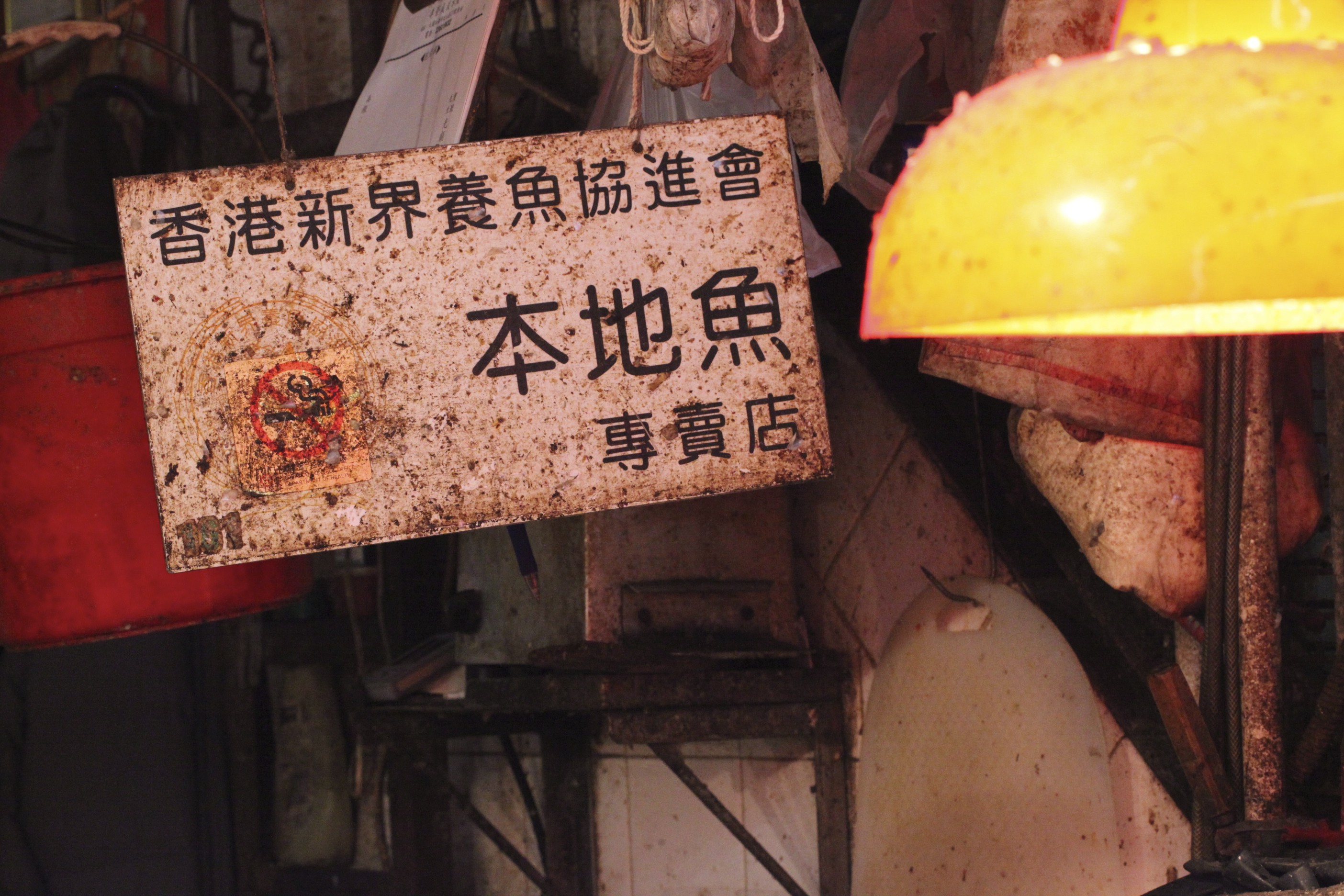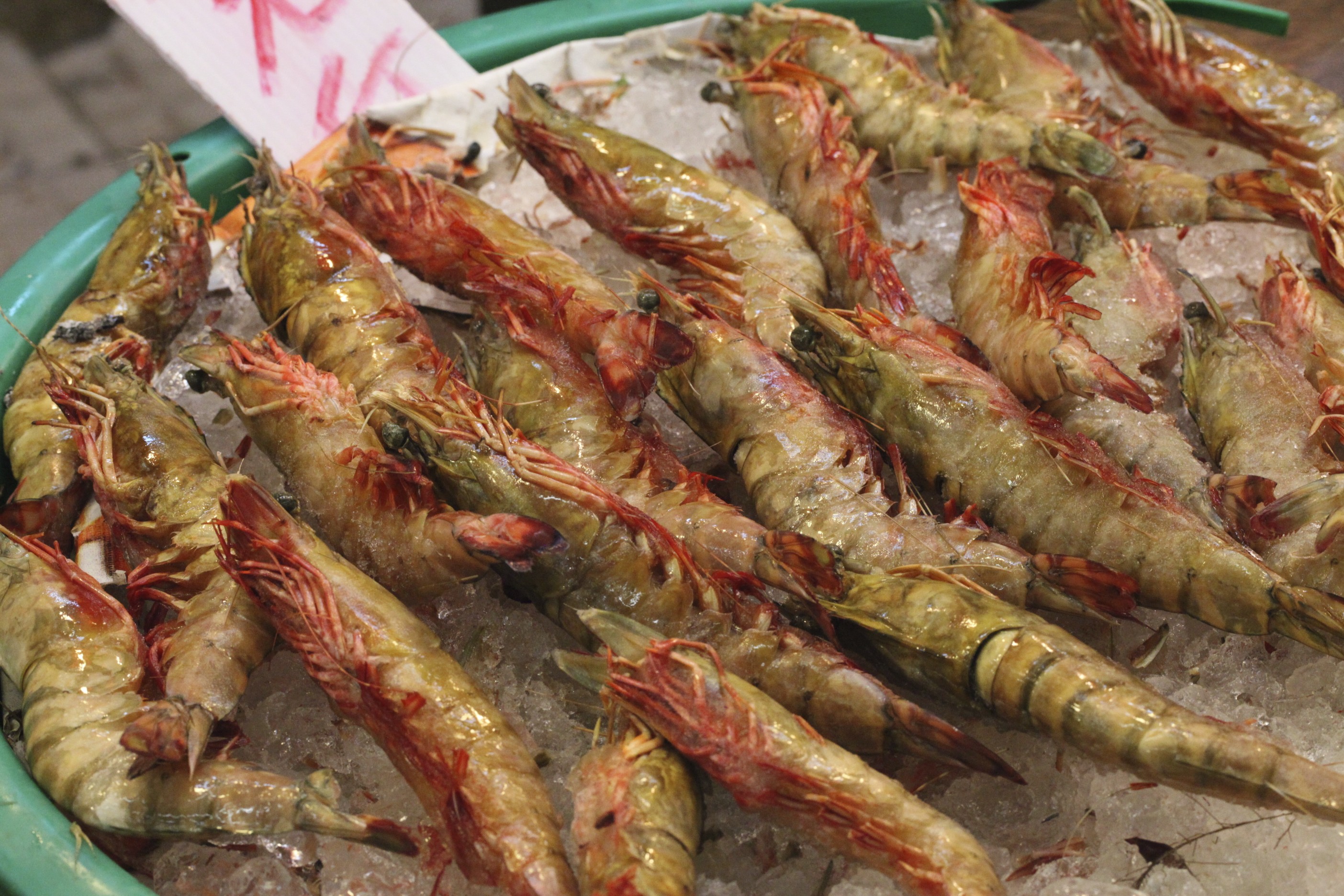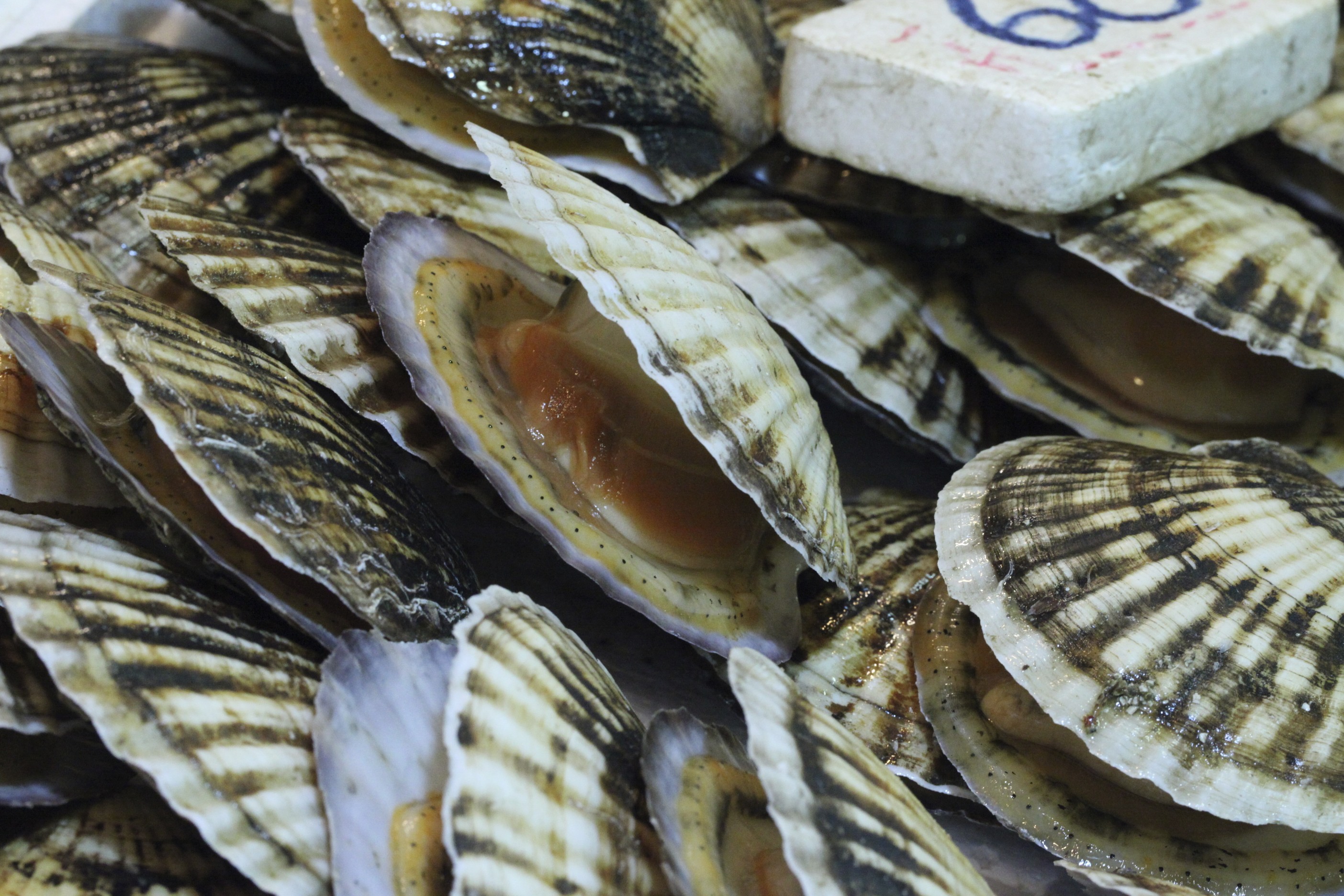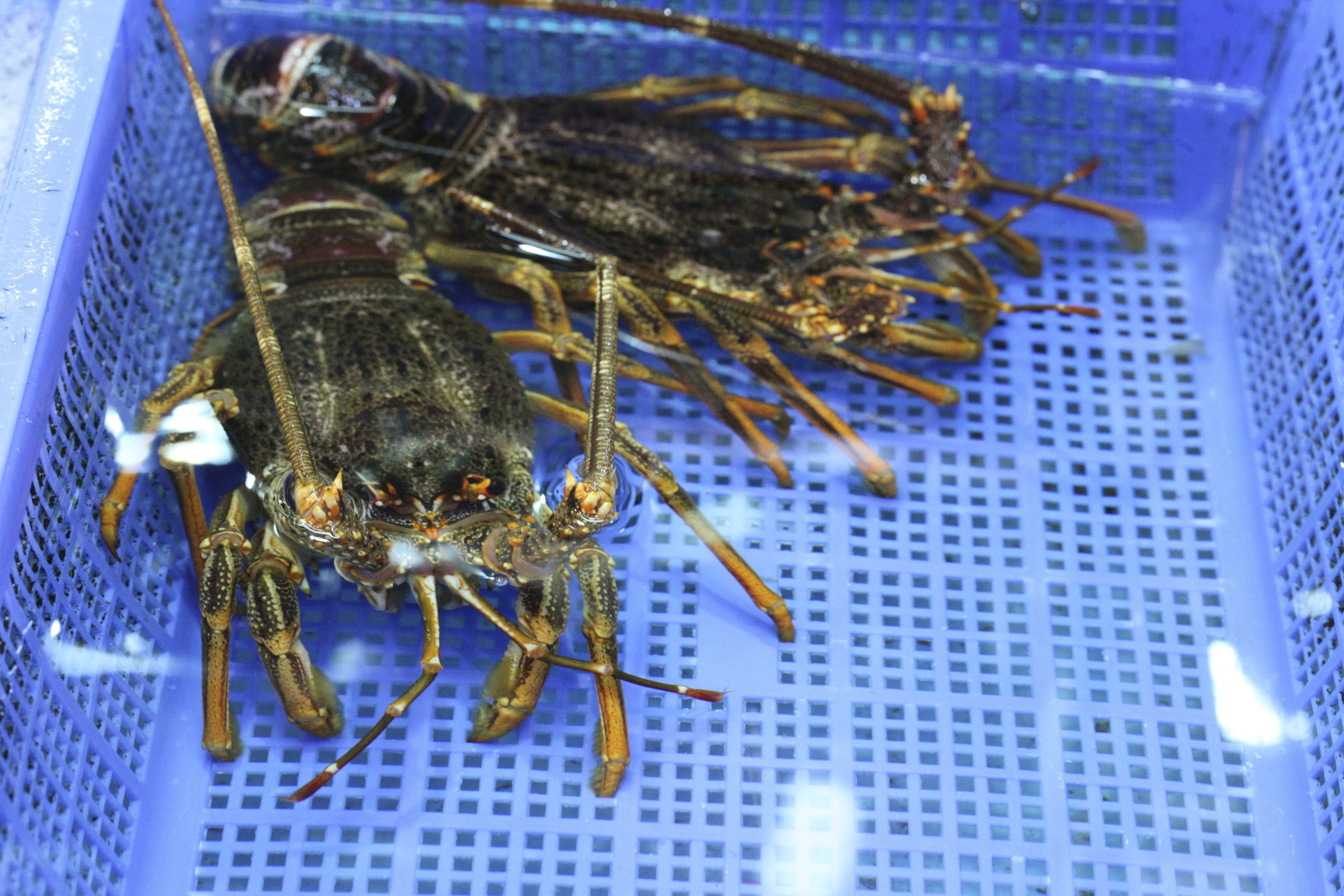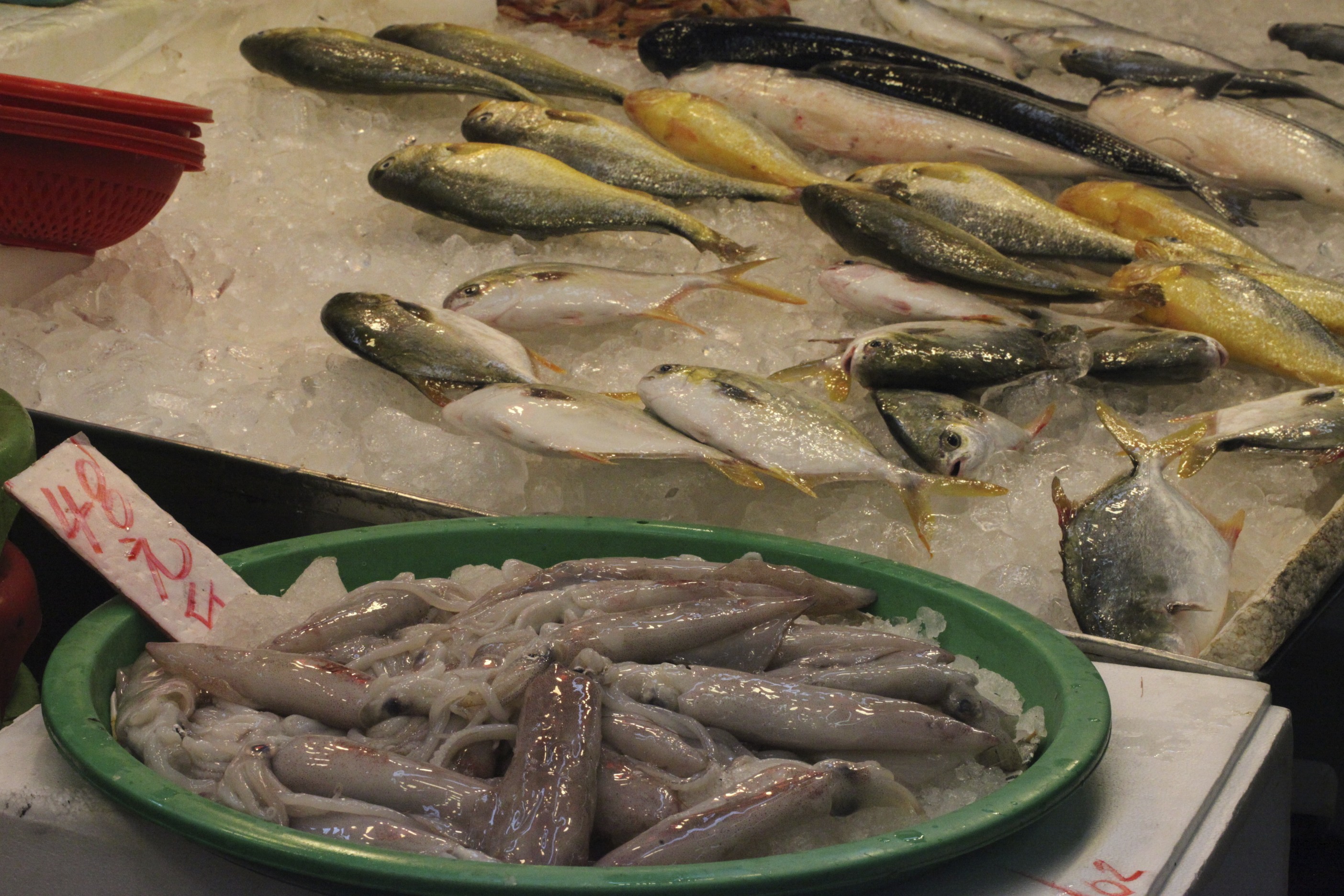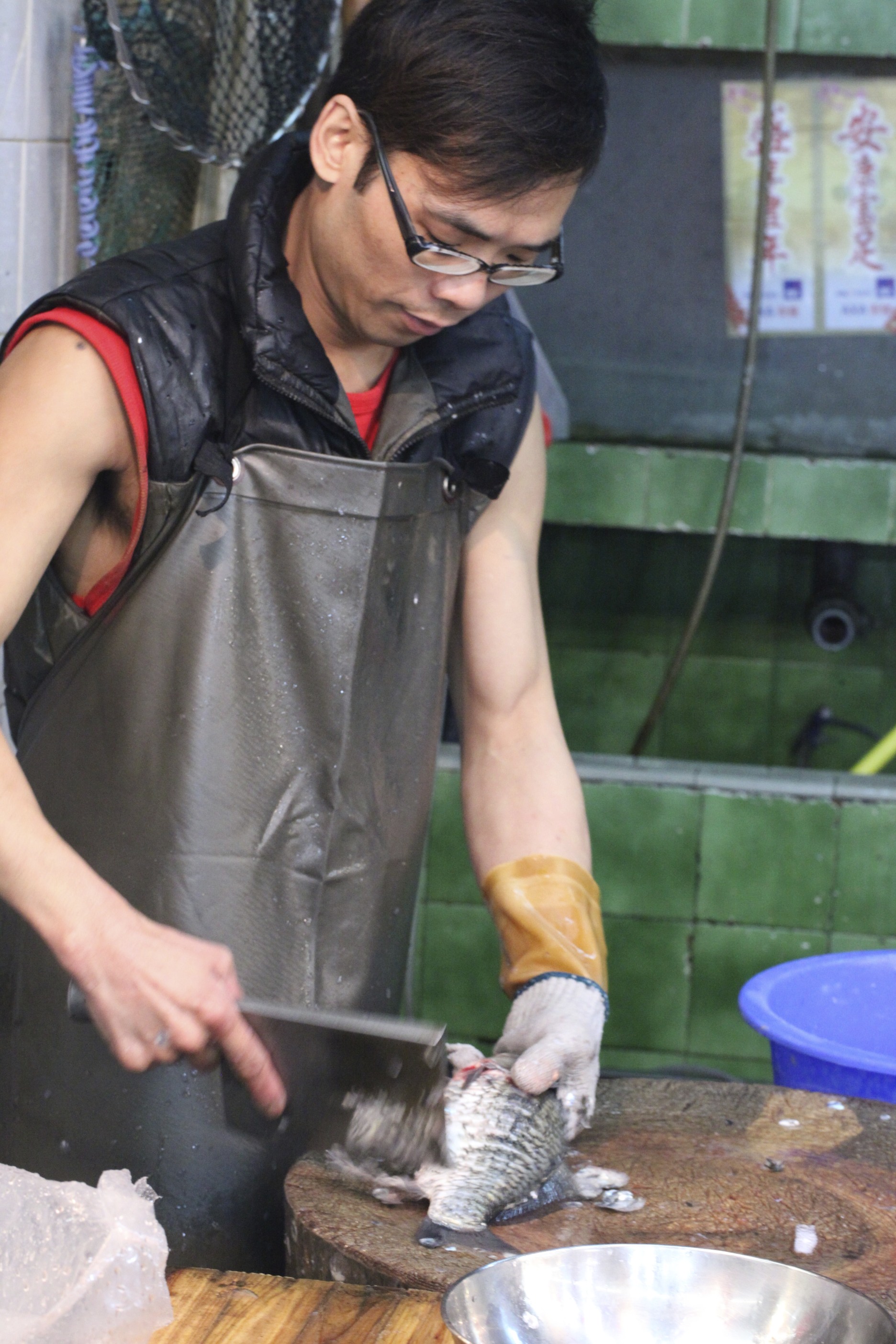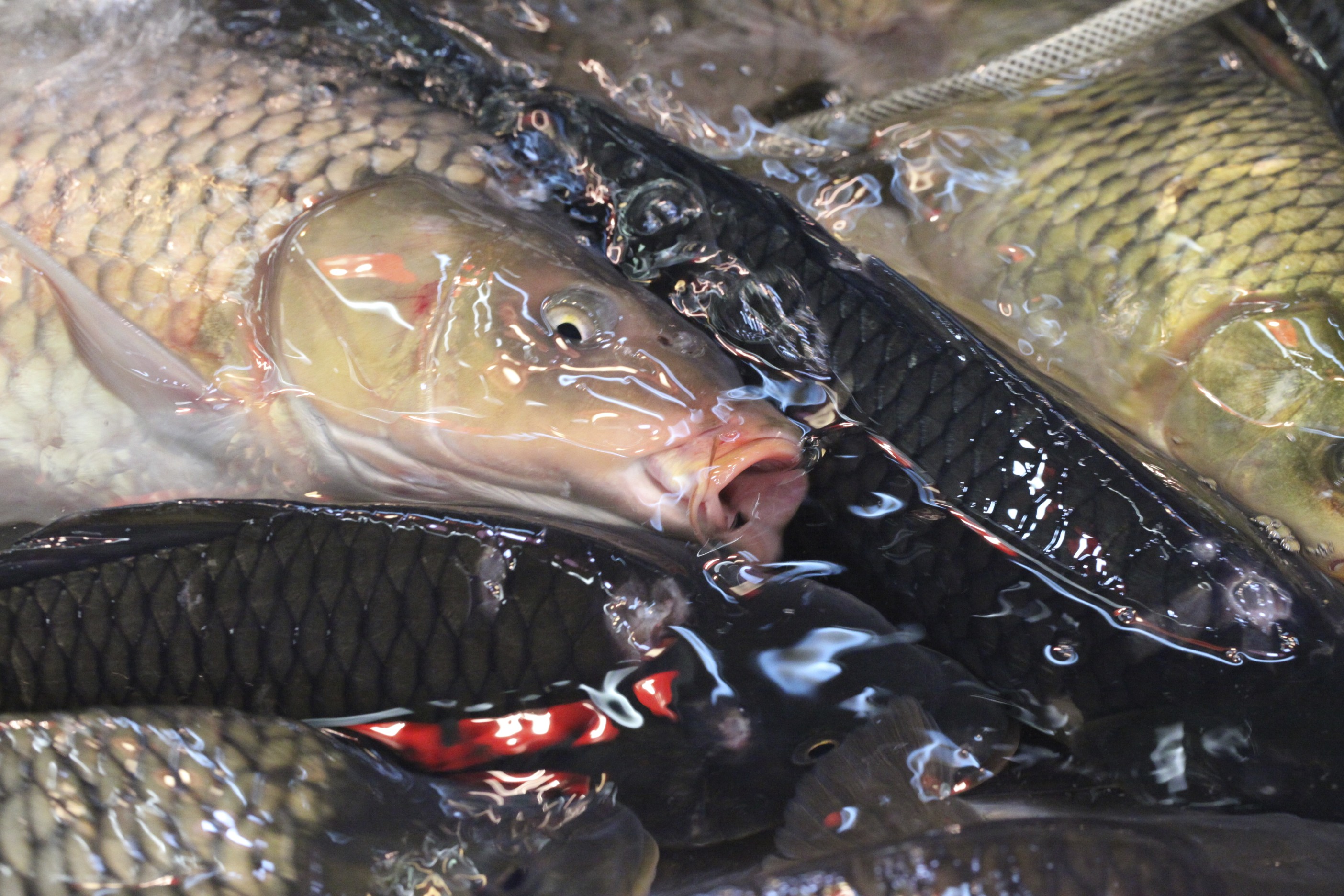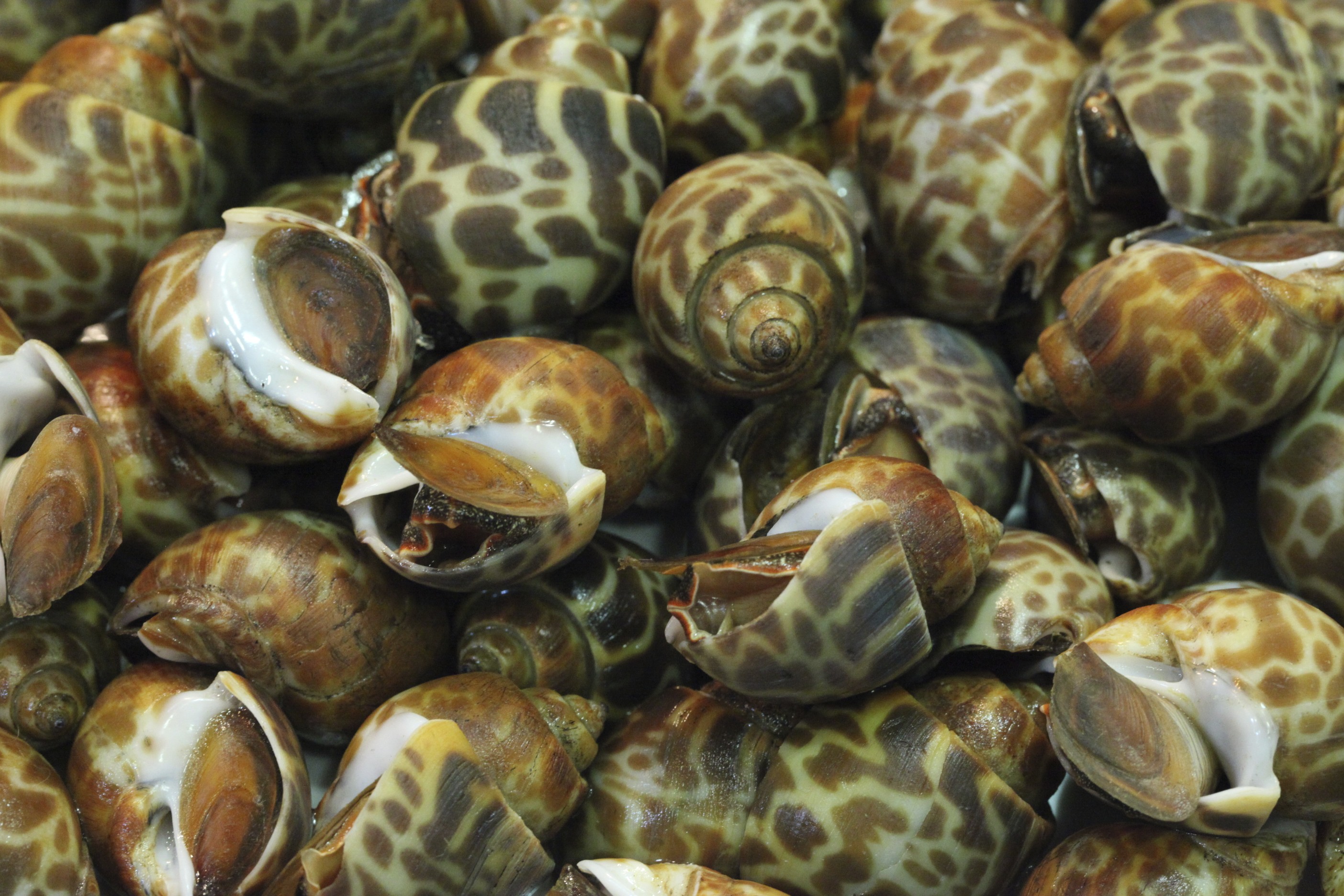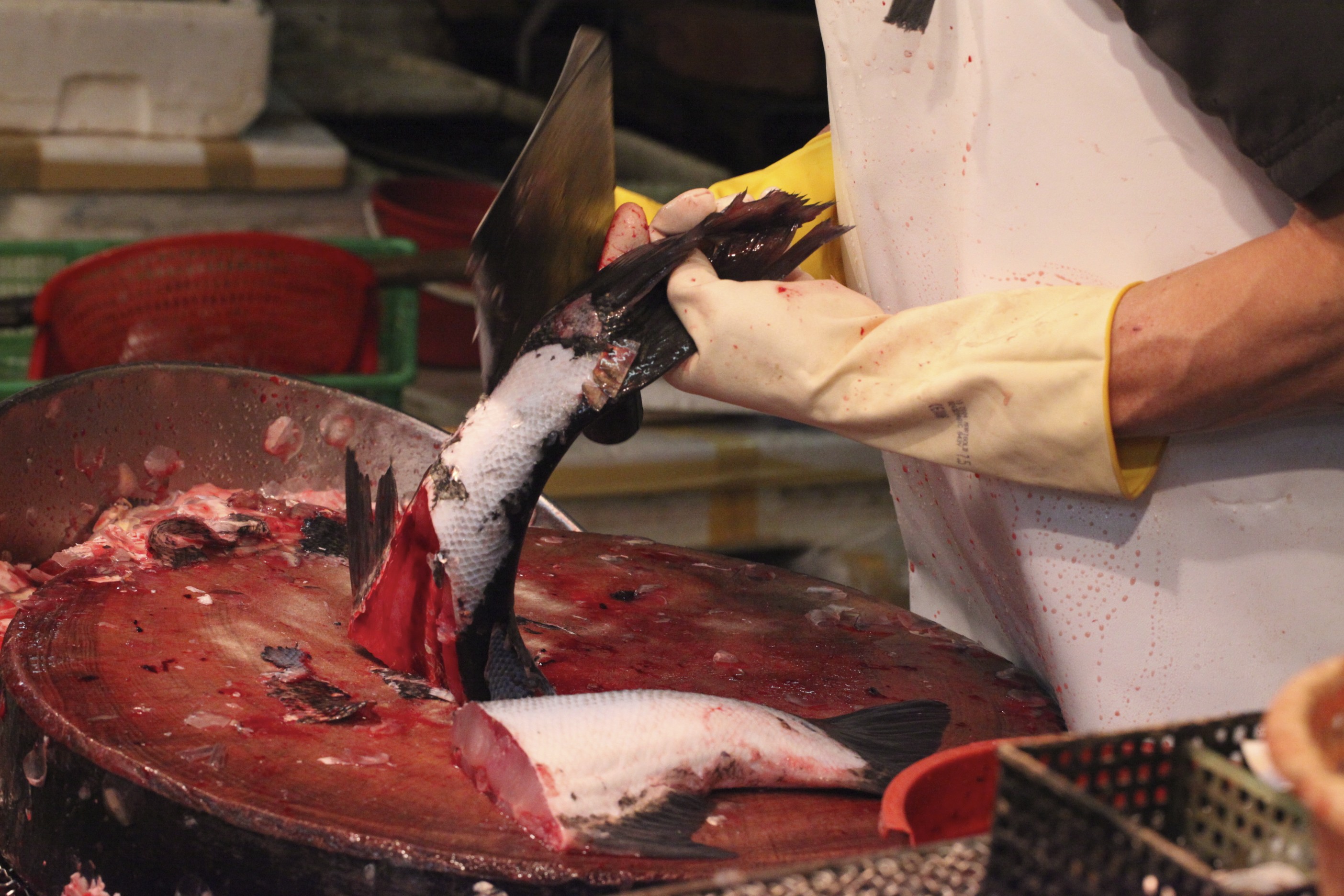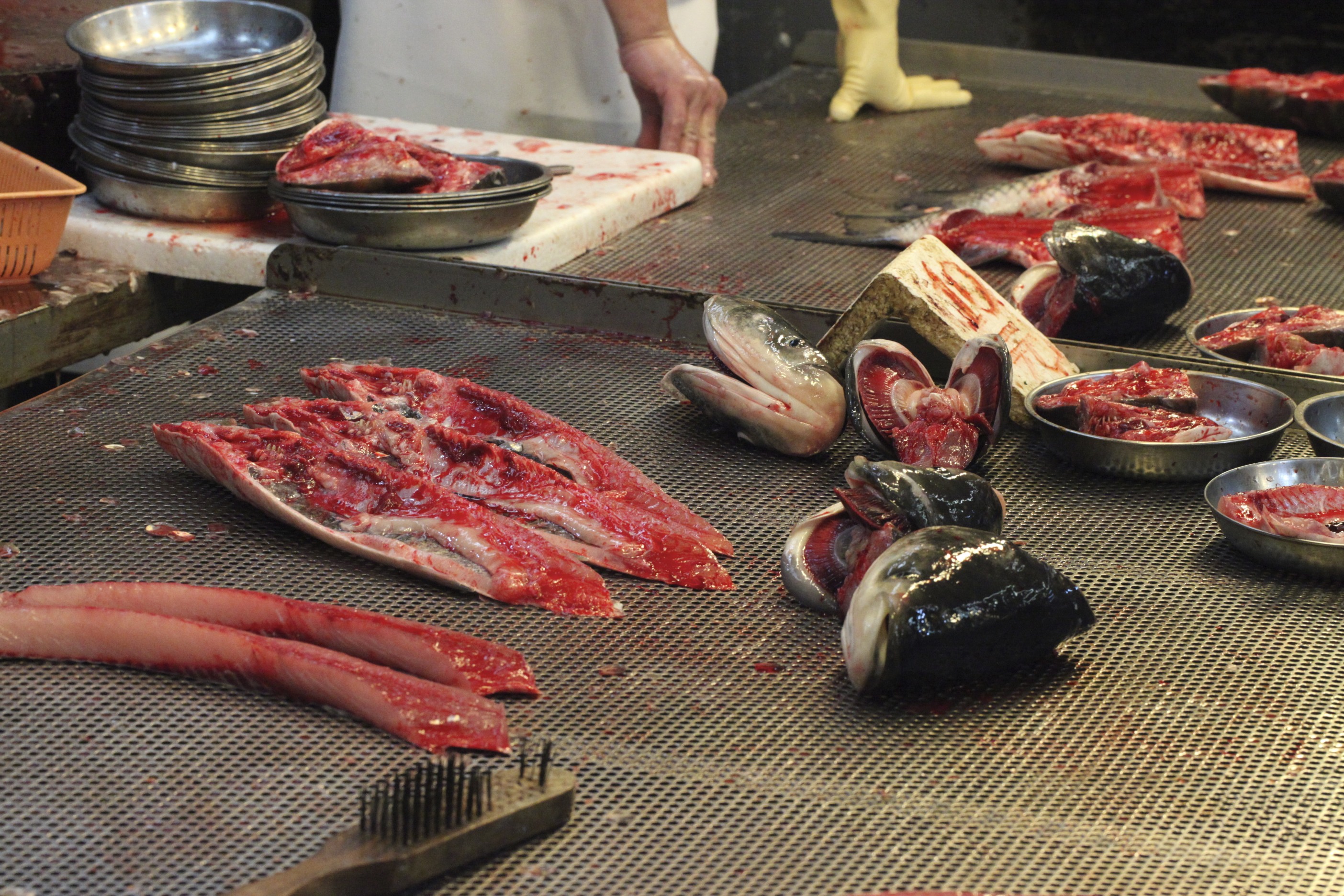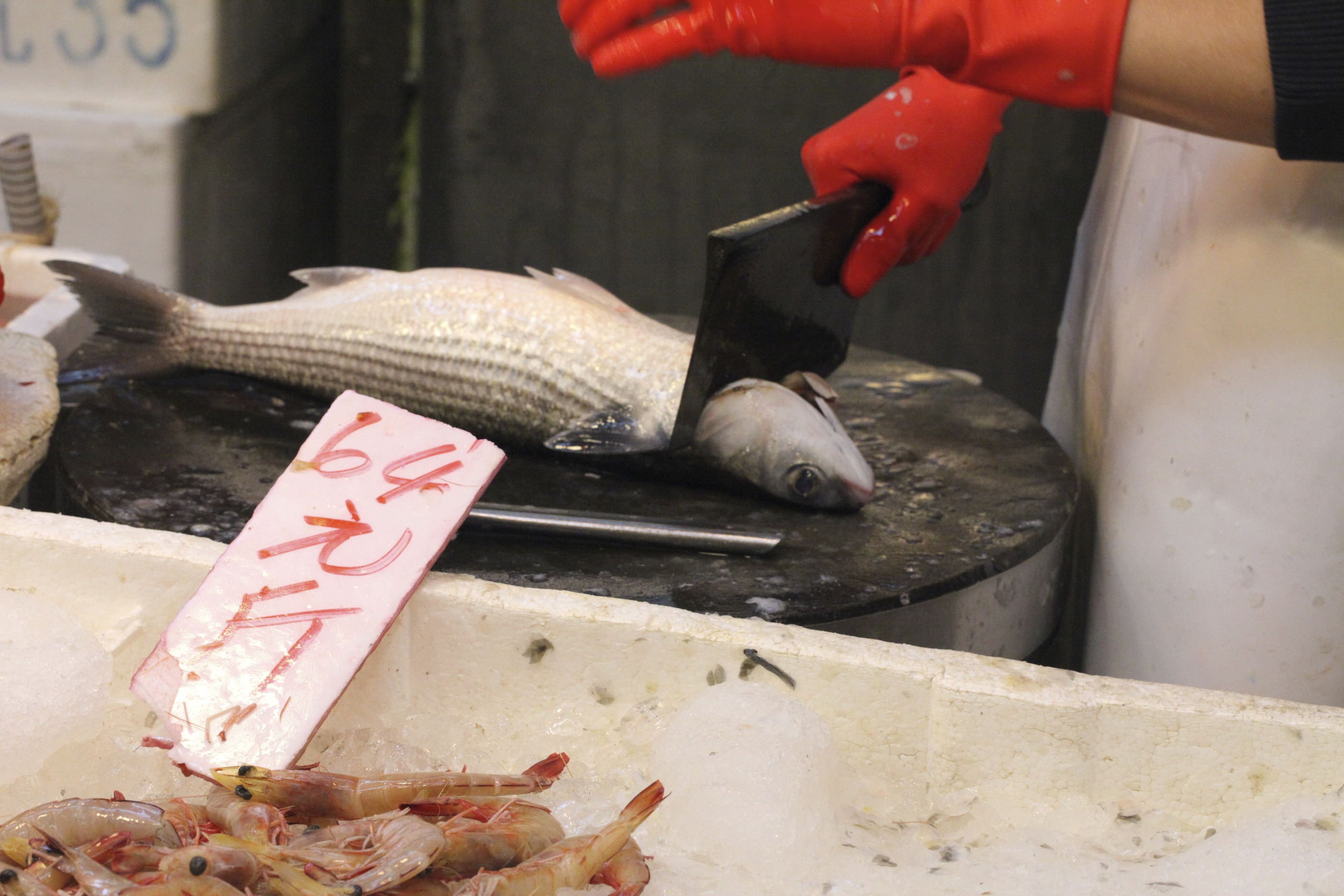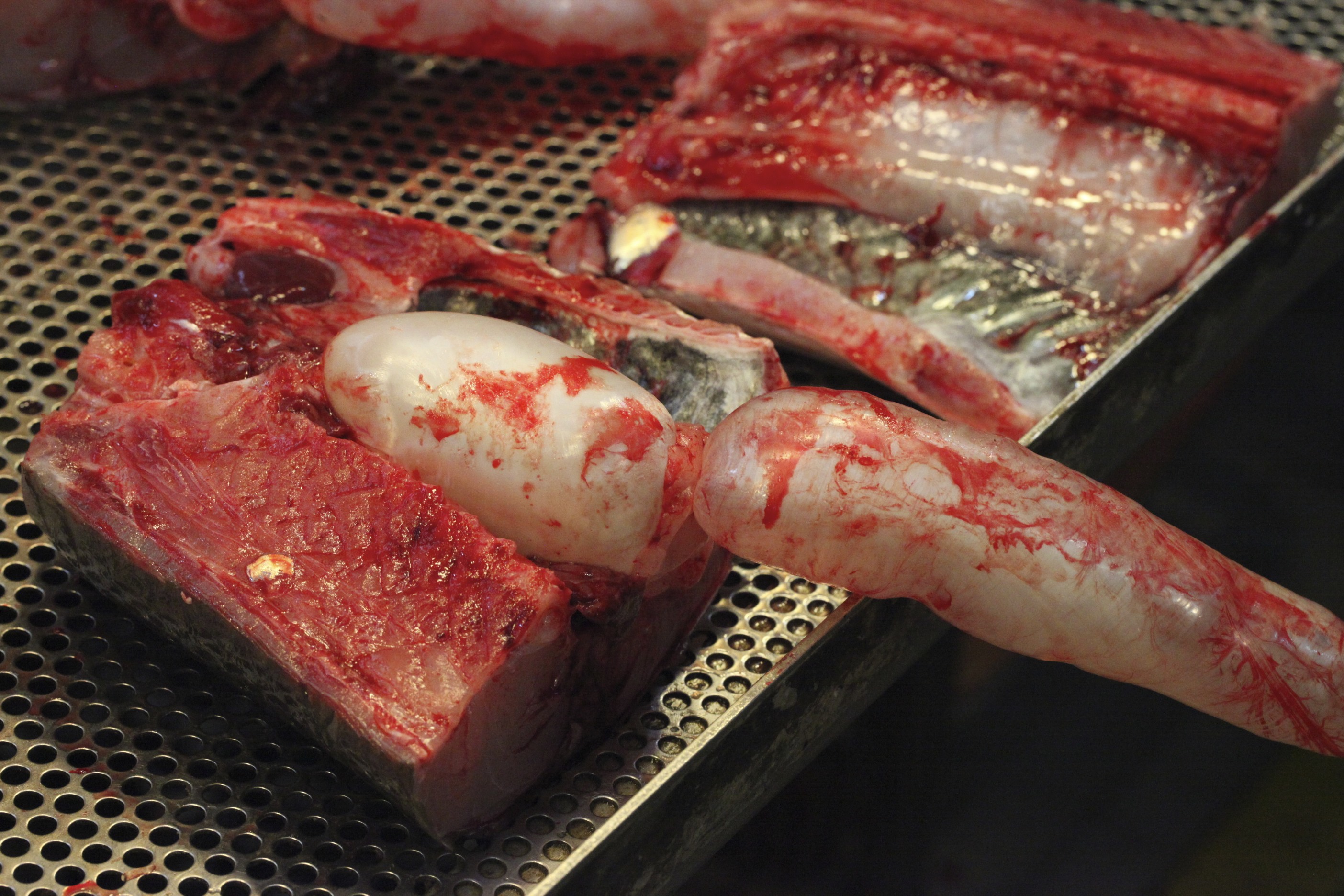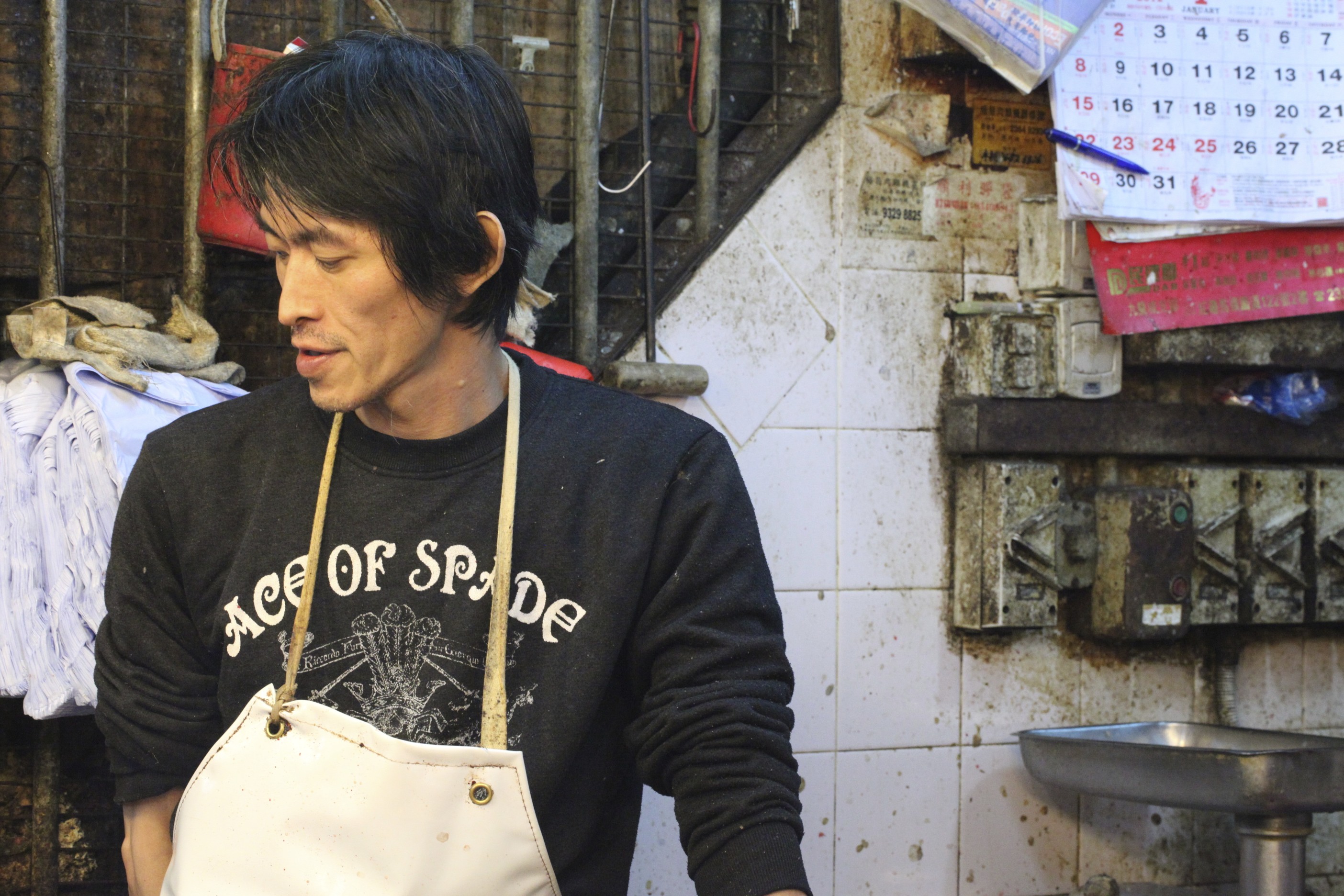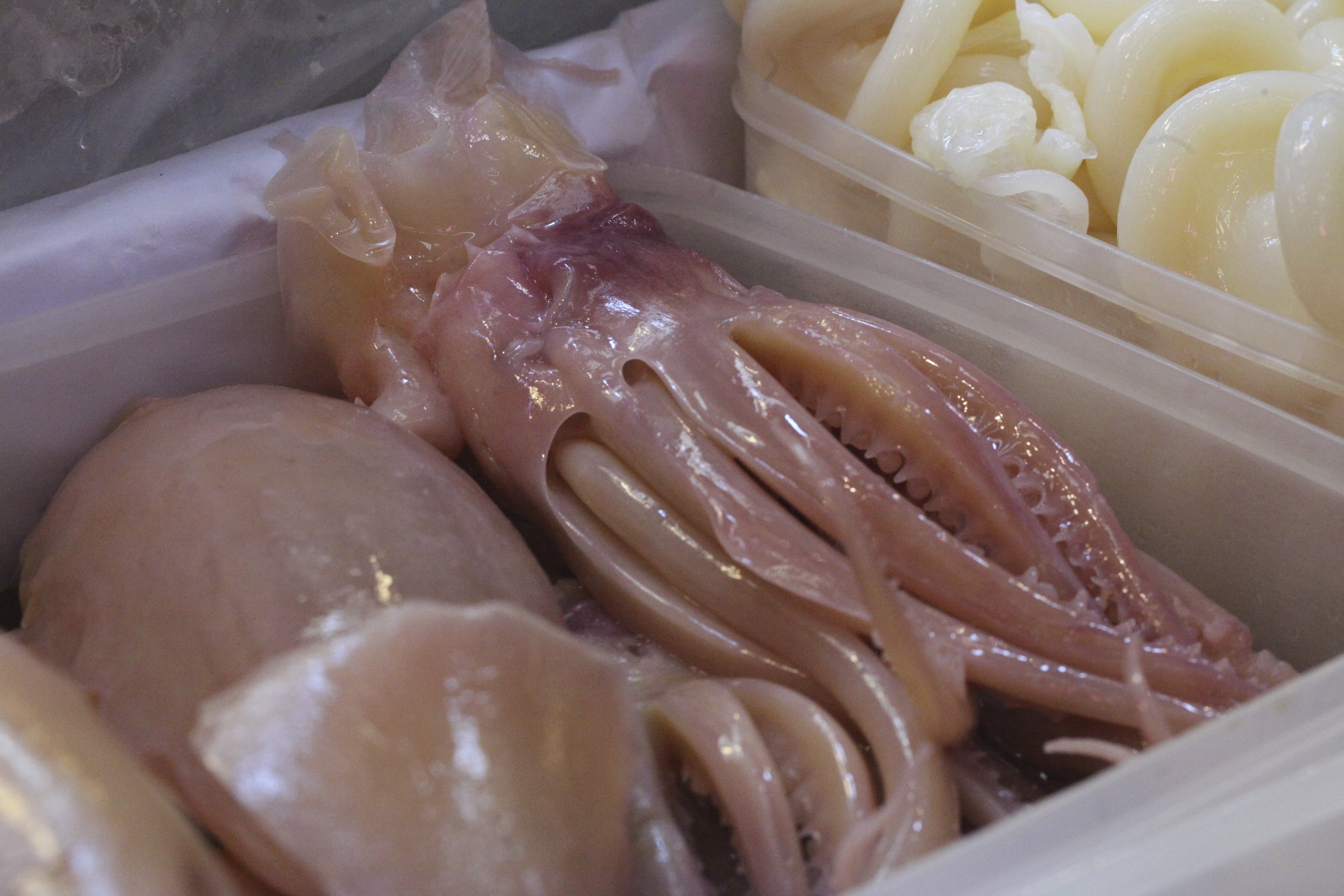What you see in the photos above is not a hand-painted De Gourney wall paper but real carp at the on of the wet market in Hong kong.
Fish is a big deal in Asia. The older generations can tell, at a taste, if the fish presented to them was wild caught or farm-raised.
Having said that , Hong Kong’s outdoor seafood markets are one of the most spectacular scenery I have ever witnessed. Entire streets are lined with vendors, and tubs upon tubs of live fish, shellfish, and even frogs. From geoduck with their elephant trunks, to prickly sea urchins, and alien-looking shellfish, the dazzling array would render even the most demanding of gourmets satisfied. Plus, competition among vendors is intense, guaranteeing you the best and freshest of the day’s catch.
The markets buzz with energy. Housewives haggle with vendors while poking at crabs with tongs, only selecting the ones that latch on in anger—because it is the feisty crab that tastes the sweetest. Next to the live tubs, fish that have given up the good fight are laid out on enameled metal plates and sold at a discount. Vendors stride around in slick galoshes, seeking to make eye contact with potential buyers as they shout out their wares and “Cheap, cheap!” prices.
The streets are wet from being continually sluiced with water—once a buyer has selected a fish, the fishmonger gets to work scaling and cleaning, sending slippery entrails and shiny, rainbow-hued flecks swooshing down a central gutter. Unlike at a Western seafood counter, the fishmonger never decapitates the fish.
The Chinese believe that everything in life needs to be accomplished with a beginning and an end (to have a “head” and a “tail”). Fish, therefore, need to be eaten in their entirety. Besides, if the fishmonger were to discard the head, what heartbreaking waste it would be! Who would want to miss out on the fish’s cheeks, with its tender, silken pouch of flesh, or sacrifice the sweet, unctuous fluid in the fish’s eyeball (the marine equivalent of extracting the gelatinous marrow from a roasted bone)?
This Asian reverence for fish is the reason why Chinese home cooks never batter and fry fresh fish. The Chinese view fried fish with great suspicion—the belief is that if the chef has to mask the fish in oil and flour, then it was probably enroute to the trash to begin with. Instead, fresh fish simply steamed is revered as one of the greatest expressions of culinary finesse. It’s the reason why fish in better Asian restaurants is always labeled “market price” (the good stuff is never frozen), and also why you’ll never catch an Asian person ordering fried fish!
Joelle’s Picks:
Lei Yue Mun
Probably the most famous of Hong Kong’s seafood districts, Lei Yun Mun was once a small fishing village that netted a name for itself thanks to its fishing fleet and seafood markets. Locals used to arrive and pick out their favourite fish at the market, before taking the victim to a local restaurant for execution. In recent years, the area has been somewhat gentrified to appeal to the increasing number of tourists, but the bustling streets, packed with around thirty, excellent seafood restaurants have lost none of their appeal.
- How to Get There: MTR to Tau Kong, Exit A2, green minibus 24 Sam Ka Tsuen.
Sai Kung
One of the most popular bolt holes for Hong Kongers looking to escape the stresses and strains of the big city, Sai Kung has, over the years, developed into a town in its own right without surrendering its laidback, seaside atmosphere. Seafood fans will want to set sail for the seafront promenade, where small sampans still sell freshly caught fish straight off the deck. You can pick your dinner, before taking to one of the restaurants that line the promenade – although the restaurants are also happy to supply you with fish. Sai Kung is best enjoyed on a lazy Sunday afternoon, leaving you time to do some hopping around the nearby islands.
- How to Get There: MTR to Diamond Hill, bus 92 or 96R (Sundays and holidays only).
Lamma Island
etting for some of Hong Kong’s most famous seafood restaurants, Lamma Island offers outstanding food against the picturesque backdrop of the South China Sea. The restaurants are set either in Yung Shue Wan or in the smaller and more appealing Sok Kwu Wan with both villages individually accessible by ferry. Some restaurants, such as the famed Rainbow Seafood Restaurant, offer customers free transport to the island from Central in return for a minimum spend. The restaurants here tend to be priced a note or two higher than those in Sai Kung and Lei Yue Mun, although the extra cents are well worth it to enjoy the waterside view.
- How to Get There: Lamma Island Ferries
Sources :Serious Eats: Wan Yan Ling’s Profile / About.com

